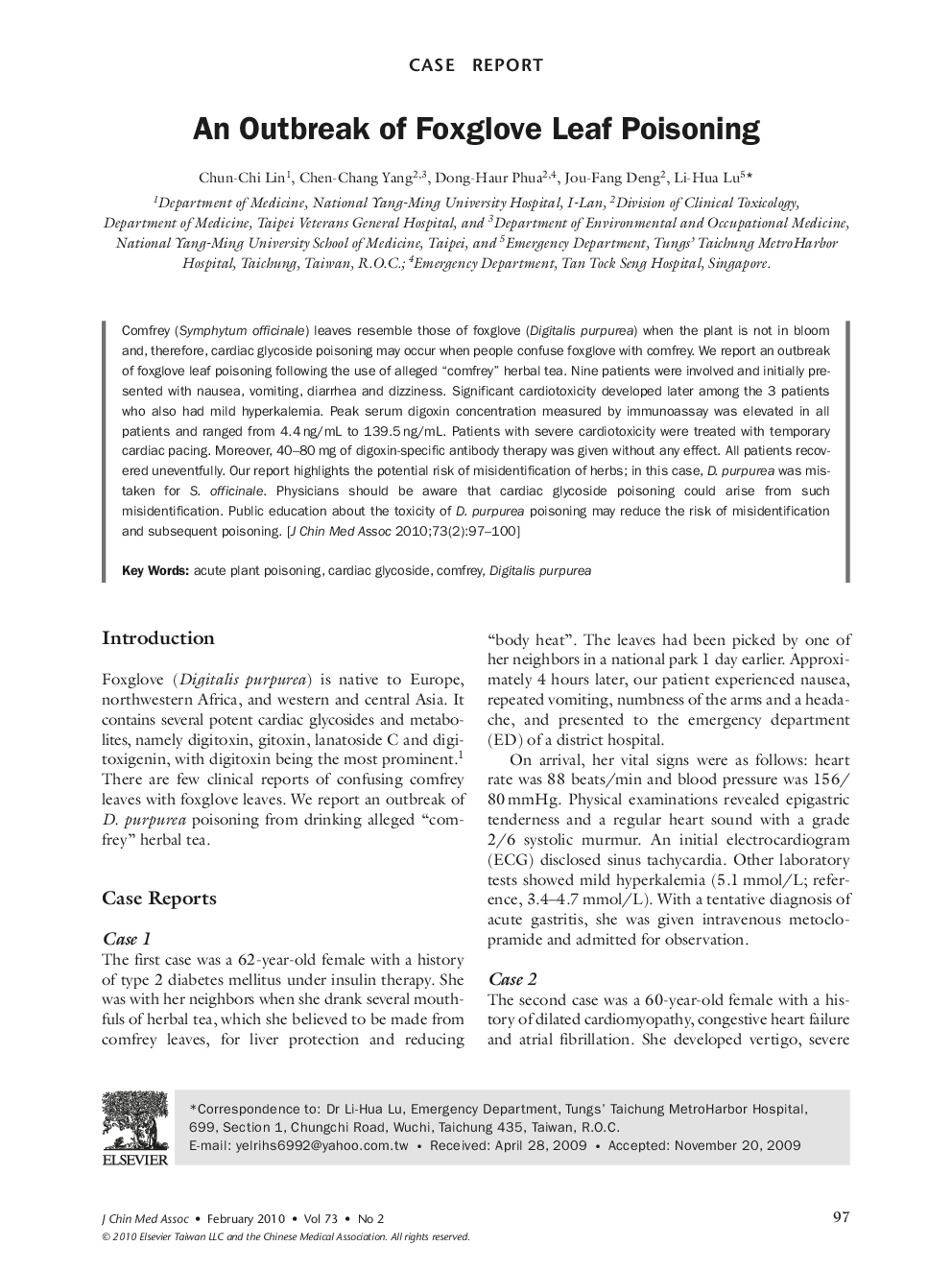| Article ID | Journal | Published Year | Pages | File Type |
|---|---|---|---|---|
| 3476613 | Journal of the Chinese Medical Association | 2010 | 4 Pages |
Comfrey (Symphytum officinale) leaves resemble those of foxglove (Digitalis purpurea) when the plant is not in bloom and, therefore, cardiac glycoside poisoning may occur when people confuse foxglove with comfrey. We report an outbreak of foxglove leaf poisoning following the use of alleged “comfrey” herbal tea. Nine patients were involved and initially presented with nausea, vomiting, diarrhea and dizziness. Significant cardiotoxicity developed later among the 3 patients who also had mild hyperkalemia. Peak serum digoxin concentration measured by immunoassay was elevated in all patients and ranged from 4.4 ng/mL to 139.5 ng/mL. Patients with severe cardiotoxicity were treated with temporary cardiac pacing. Moreover, 40–80 mg of digoxin-specific antibody therapy was given without any effect. All patients recovered uneventfully. Our report highlights the potential risk of misidentification of herbs; in this case, D. purpurea was mistaken for S. officinale. Physicians should be aware that cardiac glycoside poisoning could arise from such misidentification. Public education about the toxicity of D. purpurea poisoning may reduce the risk of misidentification and subsequent poisoning.
